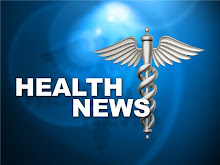Doctor Healthy Search

Custom Search

TESTICULAR CANCER THERAPY INCREASES RISK FOR CARDIOVASULAR DISEASE
Testicular cancer survivors who were treated with chemotherapy, radiotherapy or both have increased long-term risks for cardiovascular disease, a new study found.
Because such cancers are usually diagnosed before age 40, survivors can live several decades after treatment and doctors should watch for complications, the researchers note in their paper published online September 20th in the Journal of Clinical Oncology.
The lifelong follow-up for these men should focus on their cardiovascular risk profile and lifestyle interventions to prevent cardiovascular disease, lead author Dr. Hege Haugnes, of the University of Tromso, Norway, told Reuters Health in an email.
Dr. Haugnes' team studied 990 men treated for unilateral testicular cancer, following them for a median of 19 years. They stratified the men into four groups according to their treatment: 206 who had surgery only, 386 who had radiotherapy, 364 who had chemotherapy, and 34 who had both radiation and chemotherapy.
Compared to the surgery group, there was a higher risk for diabetes in men treated with radiotherapy alone (odds ratio: 2.3) or the combination of radiotherapy and chemotherapy (OR: 3.9).
The authors also found that 74 men (8%) developed atherosclerotic disease during follow up. Cox regression analysis showed increased hazard ratios for atherosclerosis after all cytotoxic treatments compared with surgery only (radiotherapy, HR 2.3; chemotherapy, HR: 2.6; both, HR 4.8).
Most chemotherapy was cisplatin-based, combined with bleomycin and either etoposide or vinblastine. When the researchers analyzed the men according to their treatments, etoposide was linked with a 5.7-fold higher risk for coronary artery disease and a 4.7-fold higher risk for atherosclerotic disease compared to surgery.
Compared to a separate group of matched controls, patients who received etoposide had a significantly higher risk of myocardial infarction (HR, 3.1) as did those in the combination therapy group (HR, 4.8).
Except for the etoposide results, previous studies had shown similar patterns, Dr. Haugnes said. She called the etoposide findings the most surprising in the study.
"A possible bias here is the inclusion of living men only, and thus only cardiovascular disease morbidity and not mortality has been reported," she said.
Because such cancers are usually diagnosed before age 40, survivors can live several decades after treatment and doctors should watch for complications, the researchers note in their paper published online September 20th in the Journal of Clinical Oncology.
The lifelong follow-up for these men should focus on their cardiovascular risk profile and lifestyle interventions to prevent cardiovascular disease, lead author Dr. Hege Haugnes, of the University of Tromso, Norway, told Reuters Health in an email.
Dr. Haugnes' team studied 990 men treated for unilateral testicular cancer, following them for a median of 19 years. They stratified the men into four groups according to their treatment: 206 who had surgery only, 386 who had radiotherapy, 364 who had chemotherapy, and 34 who had both radiation and chemotherapy.
Compared to the surgery group, there was a higher risk for diabetes in men treated with radiotherapy alone (odds ratio: 2.3) or the combination of radiotherapy and chemotherapy (OR: 3.9).
The authors also found that 74 men (8%) developed atherosclerotic disease during follow up. Cox regression analysis showed increased hazard ratios for atherosclerosis after all cytotoxic treatments compared with surgery only (radiotherapy, HR 2.3; chemotherapy, HR: 2.6; both, HR 4.8).
Most chemotherapy was cisplatin-based, combined with bleomycin and either etoposide or vinblastine. When the researchers analyzed the men according to their treatments, etoposide was linked with a 5.7-fold higher risk for coronary artery disease and a 4.7-fold higher risk for atherosclerotic disease compared to surgery.
Compared to a separate group of matched controls, patients who received etoposide had a significantly higher risk of myocardial infarction (HR, 3.1) as did those in the combination therapy group (HR, 4.8).
Except for the etoposide results, previous studies had shown similar patterns, Dr. Haugnes said. She called the etoposide findings the most surprising in the study.
"A possible bias here is the inclusion of living men only, and thus only cardiovascular disease morbidity and not mortality has been reported," she said.
Subscribe to:
Post Comments (Atom)



























































0 comments:
Post a Comment